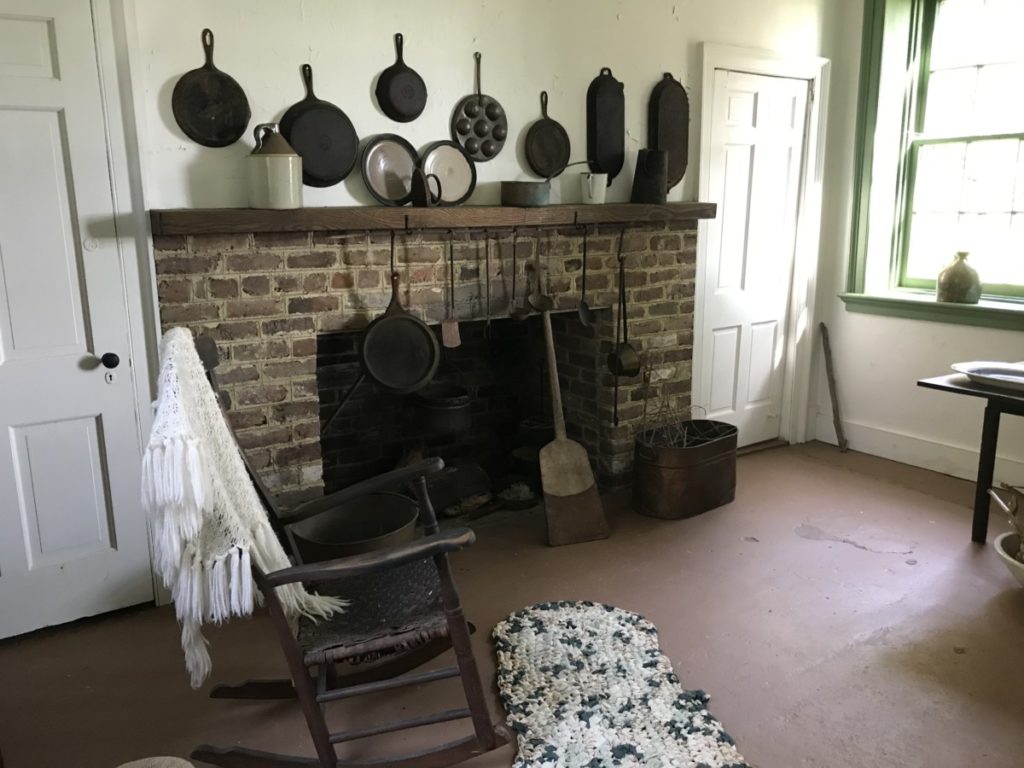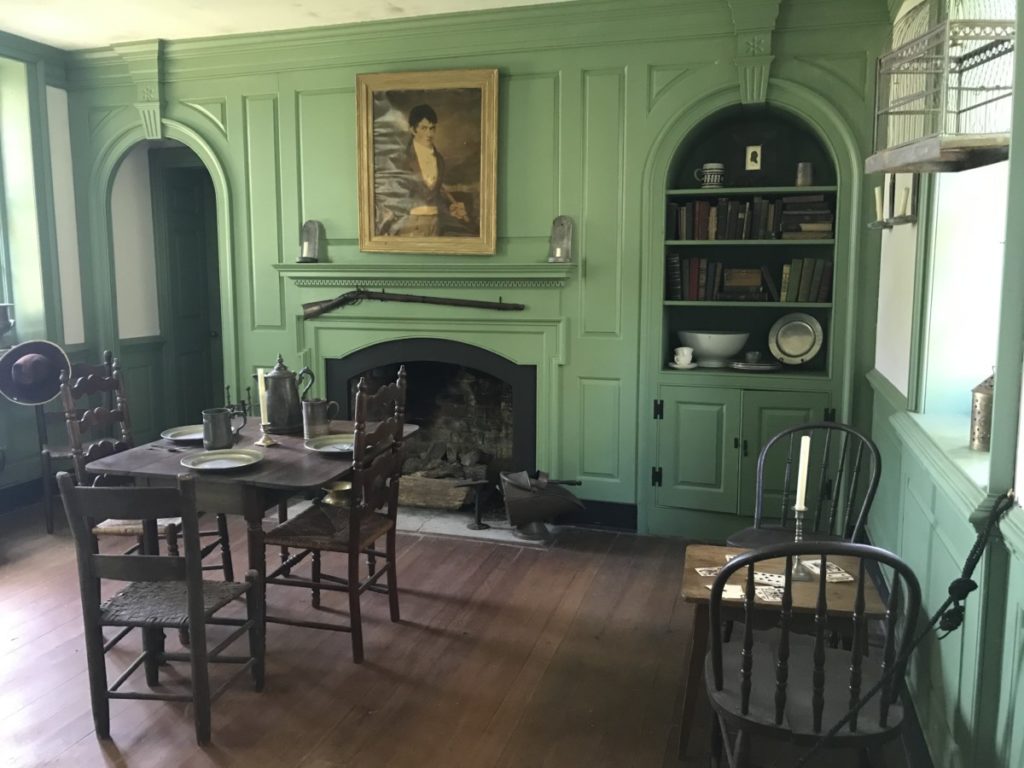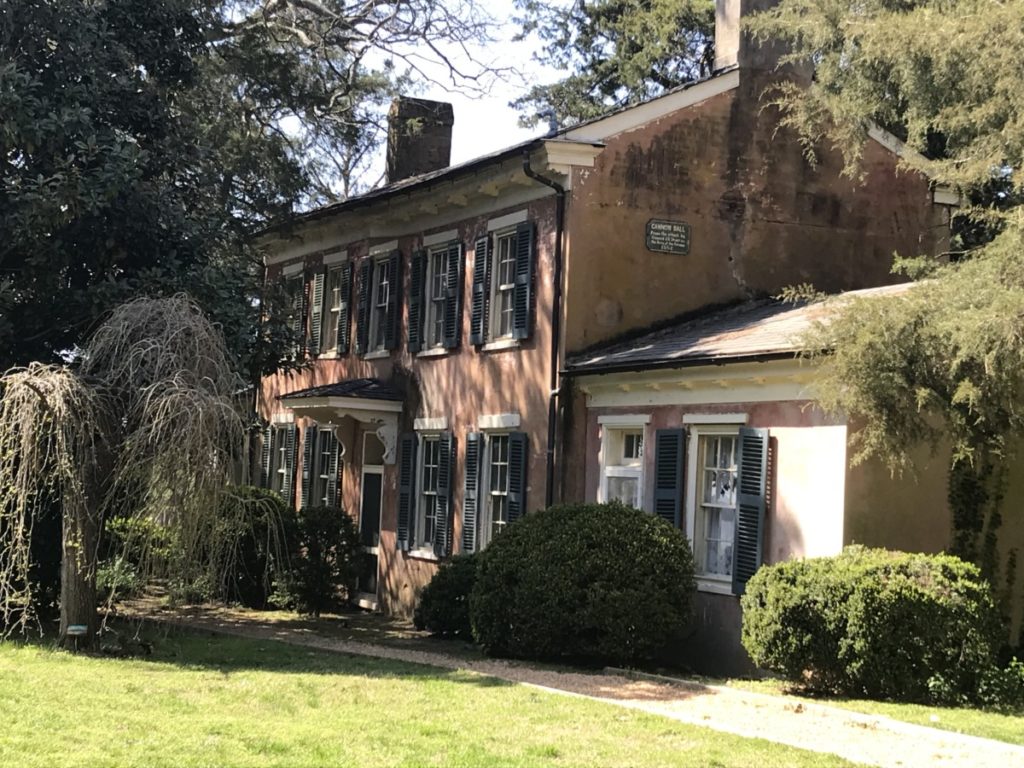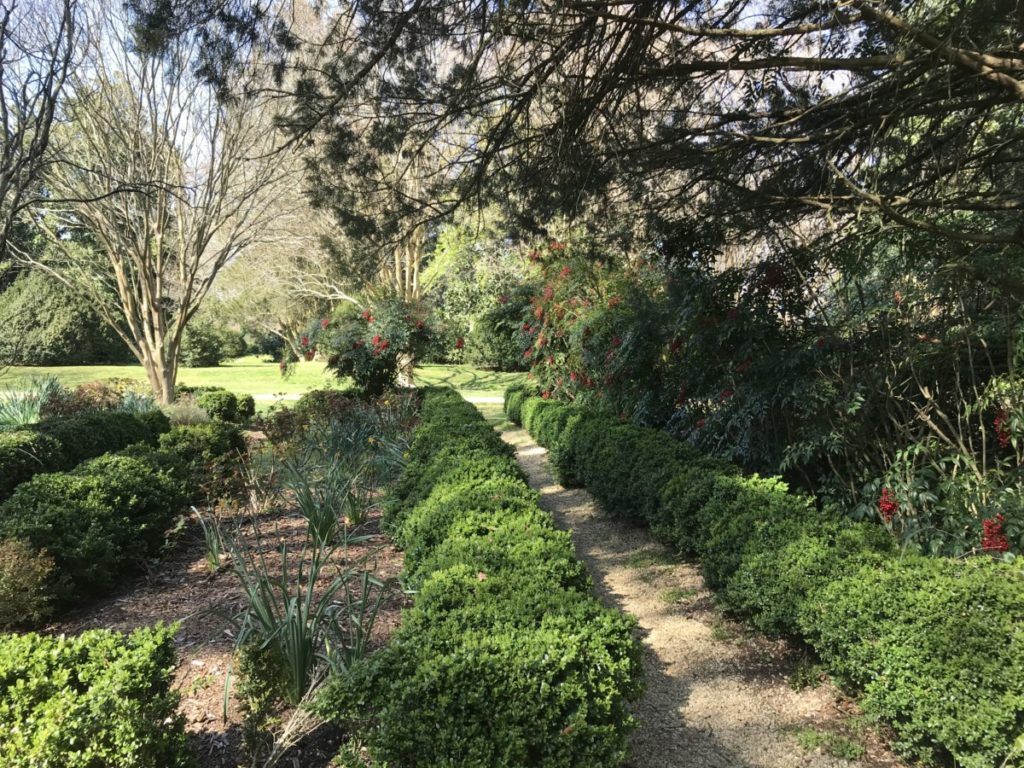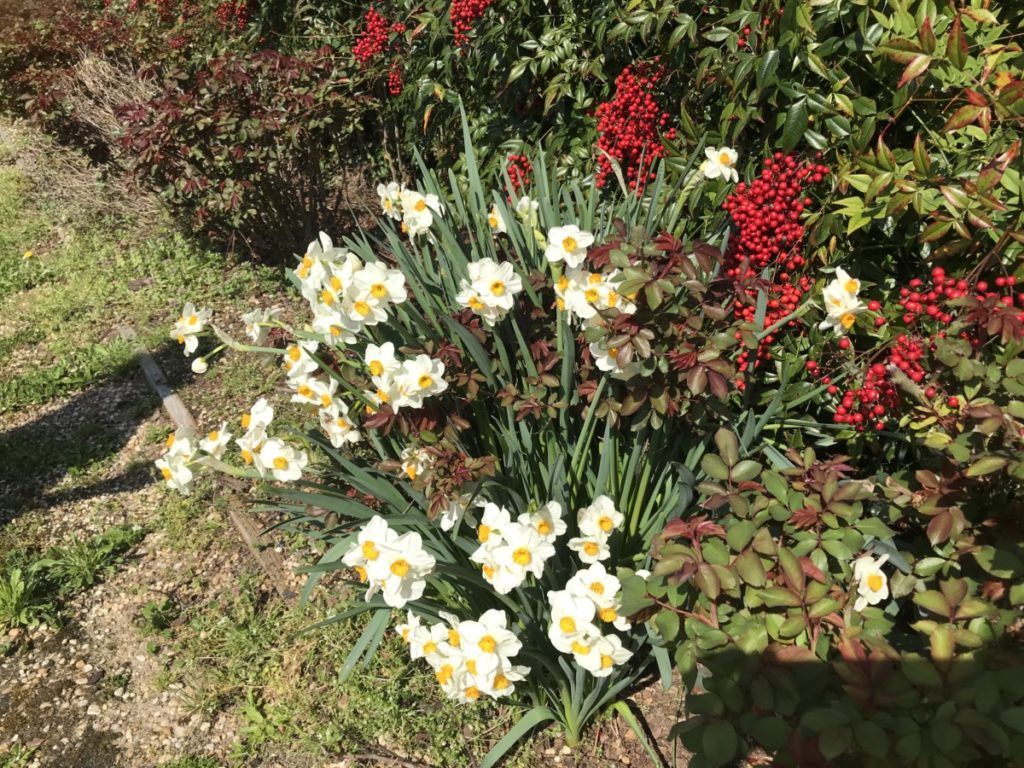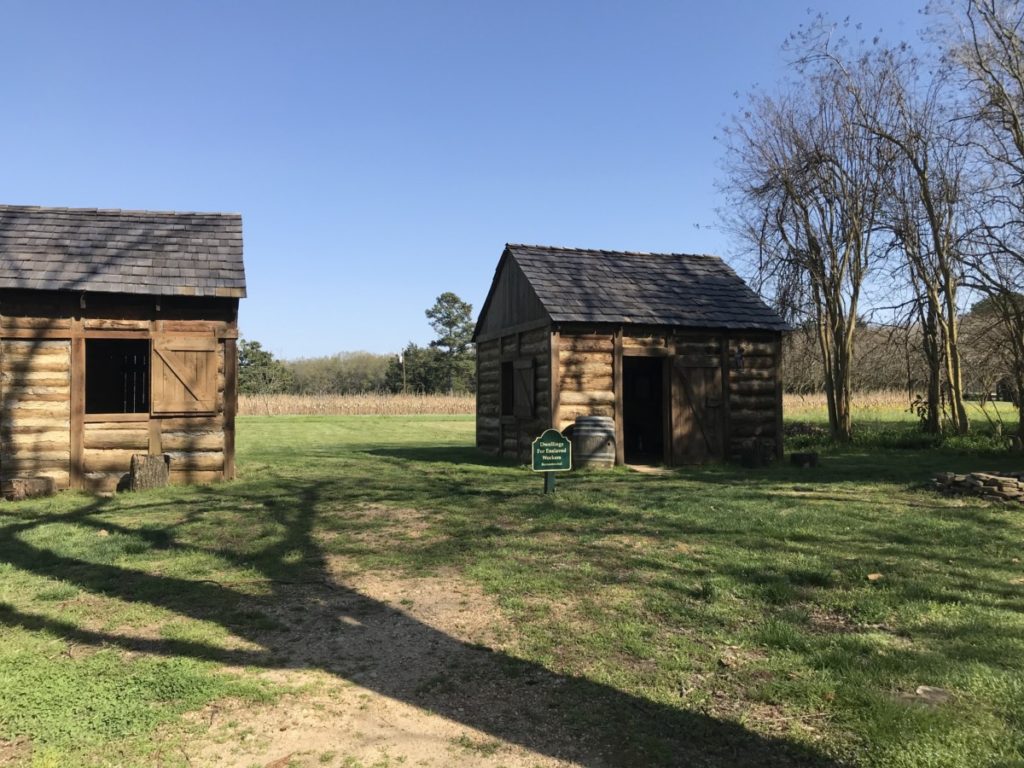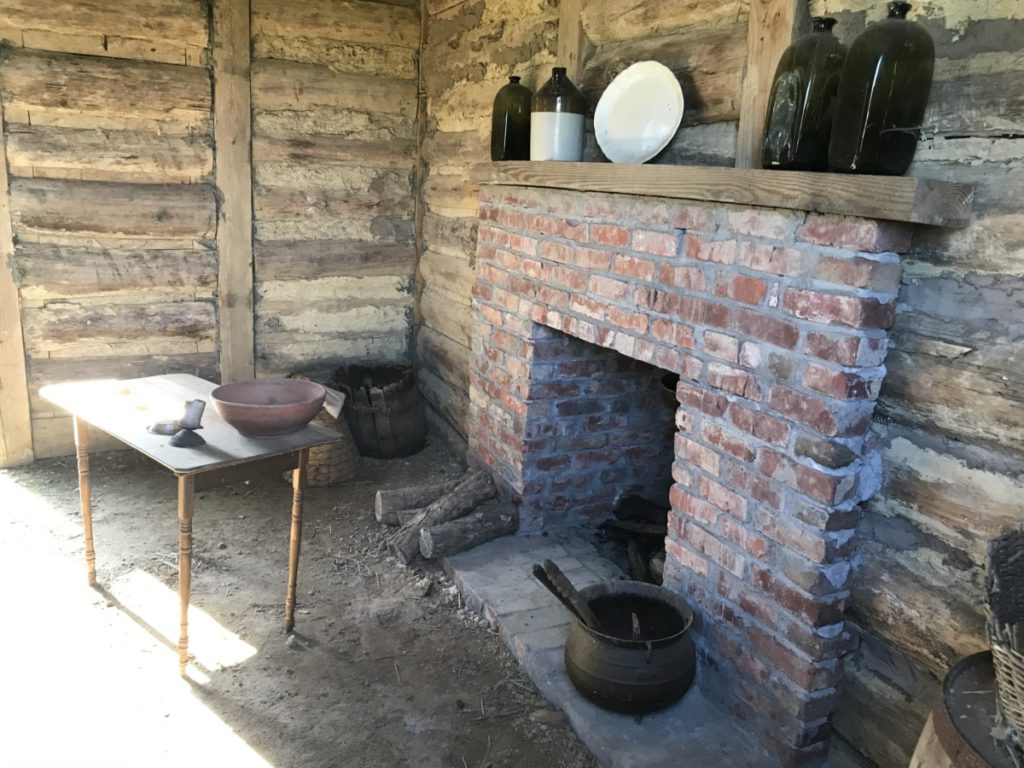It’s Spring Break, the weather is warming up and we’re coming out of the pandemic. Time for a road trip!
We hastily put together a trip to DC including the Williamsburg area. For a long time, I’ve wanted to tour some of the James River plantations and this was our chance. However, I had to find one that offered tours on a Sunday afternoon. Thankfully, Berkeley Plantation fit the bill and our time constraints.
At first, the state of Virginia didn’t strike me as very historical-looking. But once we got off I-95, farms appeared and we soon crossed over the James River. Historical plaques appeared on the John Tyler Memorial Parkway – a beautiful and quiet 2-lane road with lots of trees and a bike path. Turning onto the gravel Harrison’s Landing Road for a half-mile to the plantation house, I could imagine arriving by carriage back in the 1700s. We parked in the circular driveway of the three-story red-brick house and entered through the brick gates.
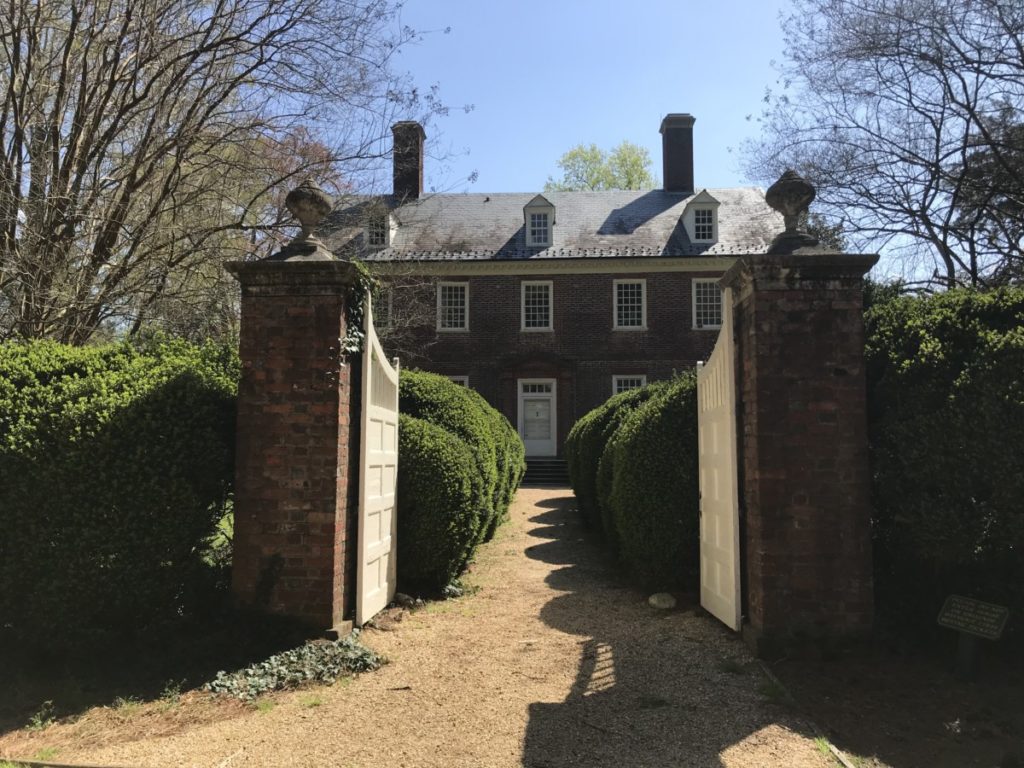
Purchasing tickets for the last tour of the day, we only waited a few minutes before the docent appeared. Dress in period costume, she started the tour outside the gift shop, one of two identical 2-story stucco houses flanking the mansion.
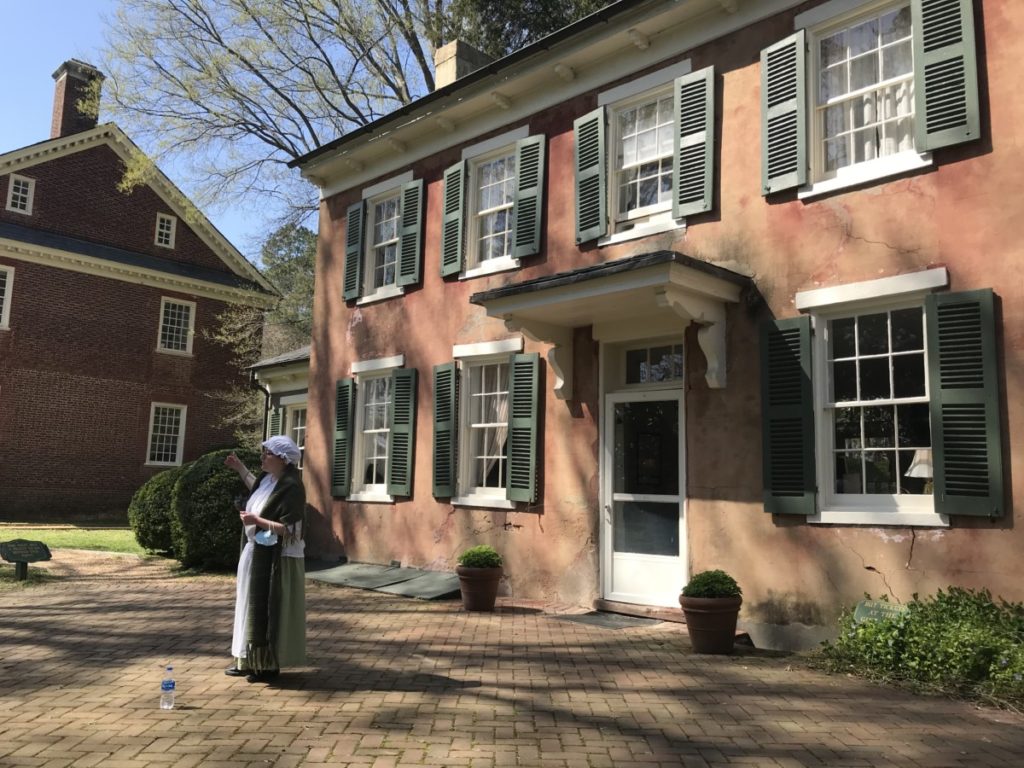
The docent explained that the smaller houses served as a guest house and a kitchen. Before taking us inside the main house, she walked us over to a large oak tree and showed us a view of the James River. A gentle breeze came through and I understood how desirable the location would be to a landowner. In fact, several plantations: Shirley, Westover, Evelynton and Sherwood Forest lie nearby.
The First Thanksgiving
Berkely claims to be the site of the first Thanksgiving. Since I always thought Thanksgiving started with the Pilgrims at Plymouth Rock, I felt confused until our docent gave us the backstory.
The Berkeley Company received a grant from King James I for an 8,000-acre tract of land in Virginia and sent 36 men to the Berkely Hundred in 1619. Although the 3-month journey proved arduous, the men followed a set of instructions once they reached the shore. They were to give thanks to God for a safe journey and to commemorate it annually.

The settlers complied on December 4, 1619. This was before the Pilgrims even arrived at Plymouth Rock. A brick structure signifies the site near the river with a plaque. For more details, the Berkely website gives an interesting account and the challenges of recognizing Virginia as the site of the first Thanksgiving here.
After an Indian massacre in 1622, the settlers left the Berkeley Hundred. It wasn’t until 1653 that Theodore Bland bought Berkeley. He held on to it for almost 40 years before selling it to shipbuilder Benjamin Harrison III in 1691. However, his son Benjamin Harrison IV didn’t complete the main house (thought to be the oldest 3-story house in Virginia) until 1726.
The Plantation House
We entered a large central hallway from the river side. Stretching 40 feet from the front to the back of the house, the hallway featured an arch almost dividing it into two rooms. Small pieces of furniture flanked the sides. Back in the day, the Harrisons hosted many balls here and deliberately placed the staircase off to the side to allow for more space. From here, four main rooms (the gentlemen’s room, dining room and two drawing rooms) come off of this entrance parlor. Unfortunately, the staff prohibits pictures inside the main house.
Benjamin Harrison V inherited Berkeley in 1745. As we peeked briefly into each room, we learned that the Harrisons entertained prominent people. George Washington attended many of the balls here and another guest, Thomas Jefferson, suggested the Harrisons add arches to their doorways to allow more light.
Benjamin Harrison V entered Virginia politics as a member of the House of Burgesses and participated in the First Continental Congress. As one of 56 signers of the Declaration of Independence, Benjamin Harrison V put his and his family’s life in danger. During the Revolutionary War, they fled the house and Benedict Arnold pillaged it. But because Arnold thought he might inherit this house, he didn’t completely destroy it.
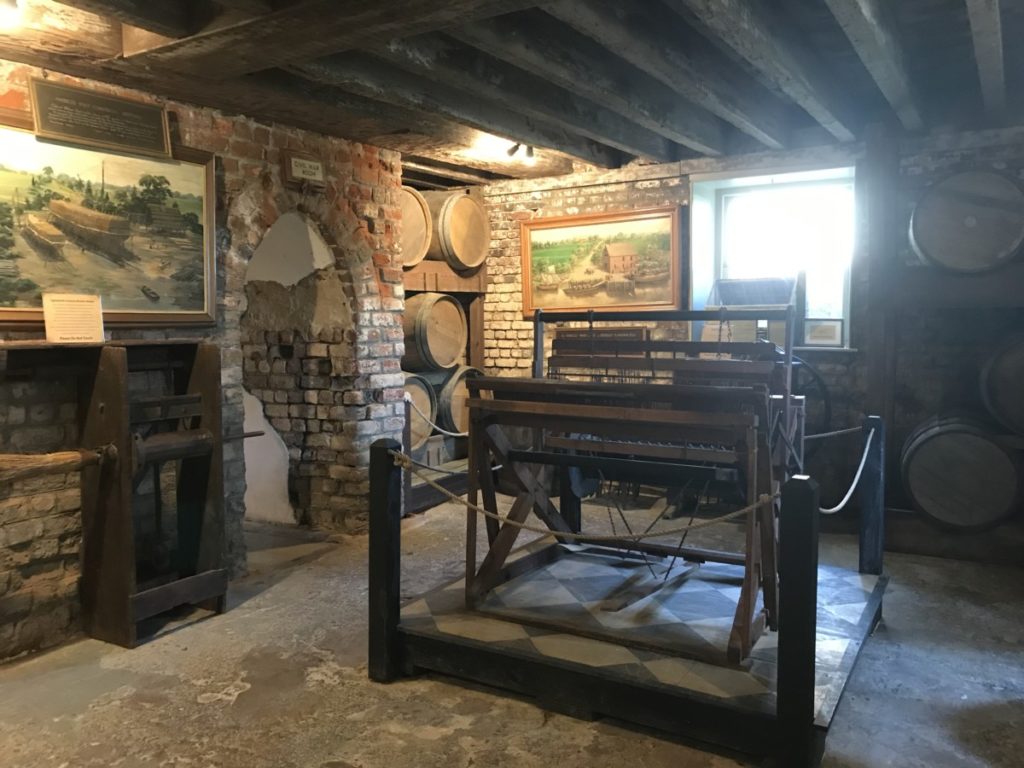
Concluding the tour, our docent encouraged us to explore the museum under the house and the kitchen next door. Here, we could take pictures. The space featured many historical items including a spinning wheel, a loom, and the bugle that first played “Taps.” On the walls hung paintings with Colonial scenes, as well as the Harrison family tree and slave records.
Many colonial owners built kitchens separate from the main house due to fire hazards. We learned that slaves carried meals from here to the main house via an underground passage. Outside, we saw a sign marking the spot a cannonball hit the house on the second floor during the Civil War. It’s a good thing the walls were 3-feet thick!
The Grounds
Now that we were free to wander around, we walked through a series of gardens leading 0.25-miles to the James River. The rose gardens, terraced boxwoods, gazebo and Ladies’ Winter Garden make this a popular wedding venue.
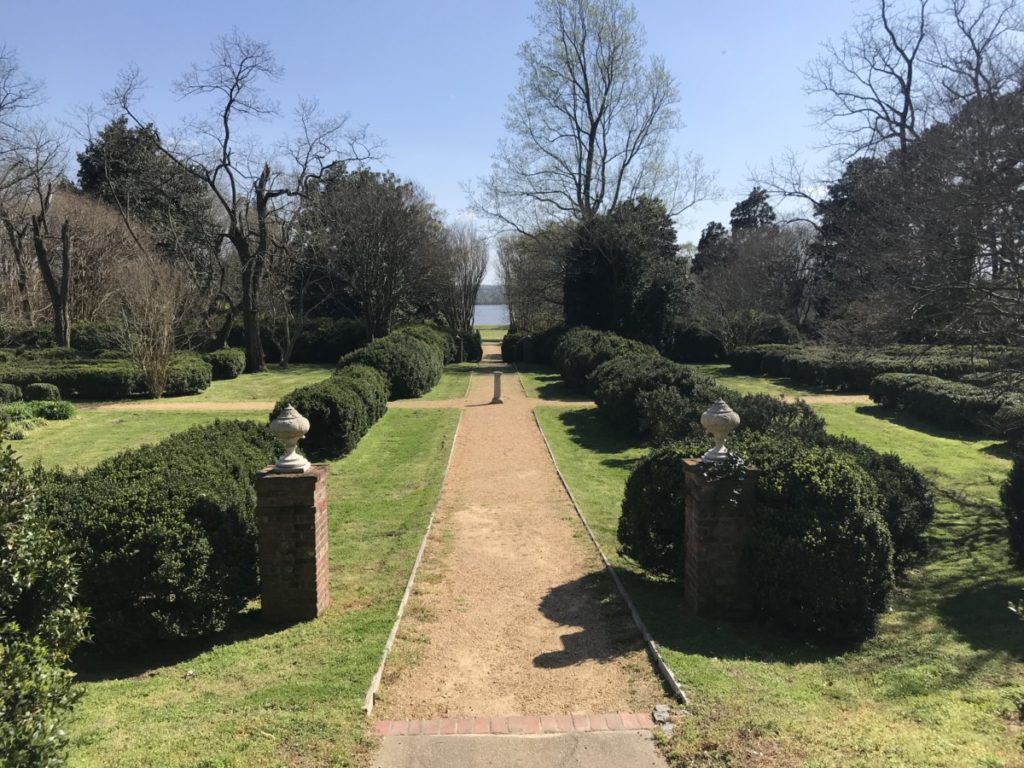
Benjamin Harrison V’s youngest son, William Henry Harrison became the 9th president of the United States. Running as a Whig and choosing John Tyler as his vice president, he used the slogan “Tippacanoe and Tyler too.” Known as the shortest presidency, Harrison caught a cold at his inauguration and died 31 days later. His grandson, Benjamin Harrison served as a Republican President from 1889-1893.
Taps
By 1842, the Harrison family sold Berkely Plantation. During the Civil War, the house served as a military hospital. In the summer of 1862, George McClellan regrouped with 140,000 troops at Harrison’s Landing. The story goes that General Butterfield never liked the formal “extinguish the lights” bugle call. He reworked an old bugle call “Tattoo” and asked his bugler O.W. Norton to play it while at Harrison’s Landing. Other people liked it and asked for a copy of the music. Years later, Taps became the official song played at military funerals.
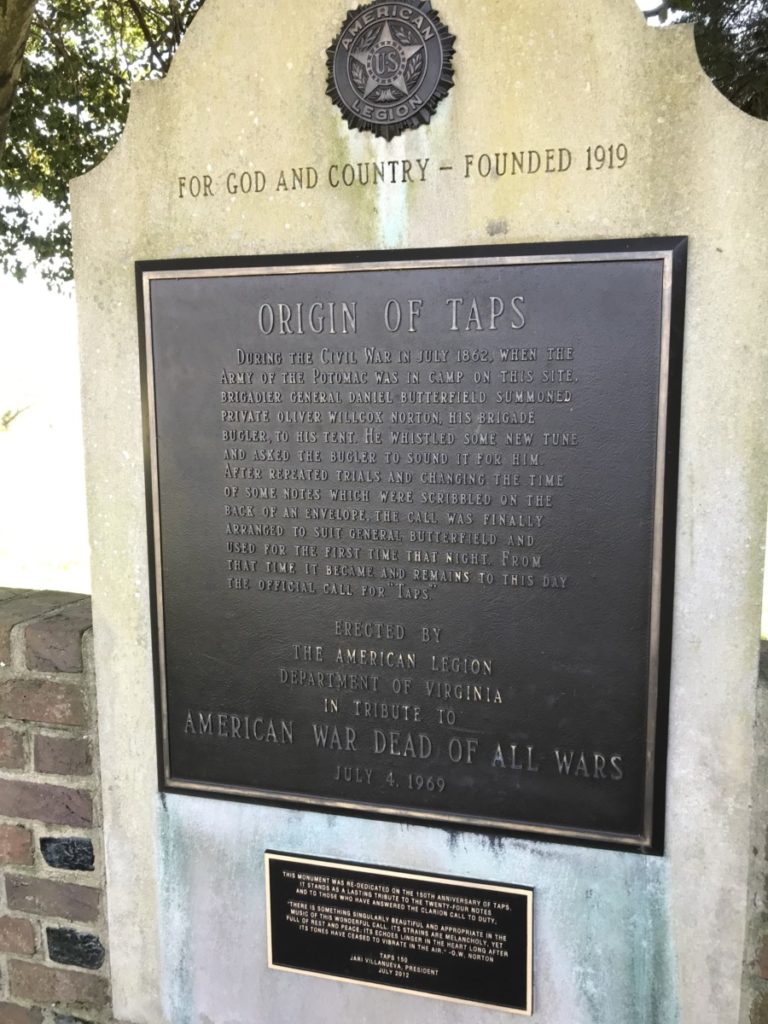
While reading the plaque about Taps, a recording played the somber 24 notes of music. As I stood in the grassy area, I pictured weary and injured soldiers hearing the music for the first time. Haunting and sobering, we headed back to the gift shop.
We passed by a group of two recreated slave cabins which showed disparities in living conditions. Constructed of wood, the original structures didn’t survive the neglect after the Civil War, but paintings in the museum under the house showed what they would have looked like. In 2018, moviemakers filmed “Harriet” (about Harriet Tubman) at Berekely. Slave quarters were built for the set and Berkeley owners keep them on display to bring awareness and education.
Recent History
Before reaching the gift shop, we went into the Coach House which showed a short film. John Jamieson, a drummer boy who was stationed at Harrison’s Landing in 1862, purchased Berkely Plantation in 1907. Deemed uninhabitable, he passed the property to his son Malcolm. It’s hard to imagine but at that time, the main house served as a barn with chickens and cows. Malcolm and his wife Grace lovingly restored the plantation and gardens to their former grandeur and began offering tours in 1940. Today, descendants of the Jamieson family still reside on the property.

Information
Tours begin on the hour and tickets are $15 per adult. For more information, visit Berkeley’s website here.

